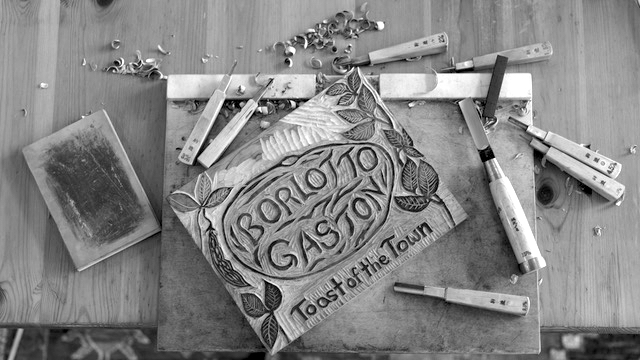
Farm Bulletin: Open Days, and a Tally of the Harvest
I was thrilled to find the latest farm update from contributor Anthony Boutard of Ayers Creek Farm in my e-mail in-box this morning, detailing the results of the year's harvest. Please make plans to attend at least one of the open days outlined below. Your holiday table will thank you!
Autumn with his cold and wet demeanor came stomping about early, necessitating careful staging of the harvest. We have accommodated his early entrance and are now in a good state of affairs, able to schedule the remaining open days of the year. We will be open next Saturday and Sunday (9 & 10 November) from 2 to 5 p.m. We will also be open the Sunday before Thanksgiving (24th), as well as the 8th and 22nd of December.
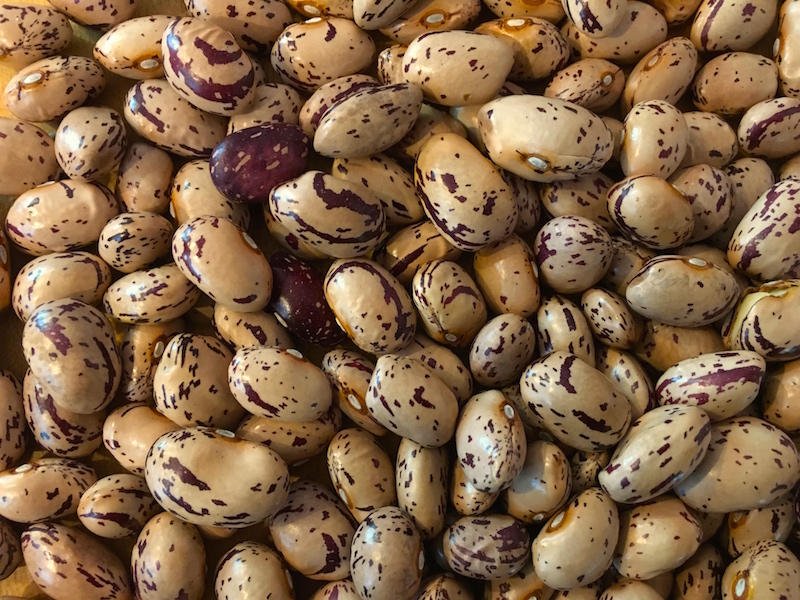
The tomato harvest came to an abrupt end three weeks earlier than last year and we lost all of the zolfini and Dutch Bullet beans; sometimes a farmer has to walk away from a soggy mess rather than try to salvage a harvest of inferior quality. No point in that, tears at the heart worse than simply turning it under. There is fine crop of wheat sprouting there. We do have a few left over from 2018. Fortunately we have a good crop of Borlotti, Wapato Whites, Tarbesque and Purgatorio. We will have Roy’s Calais flint and Peace, No War cornmeal, and whole kernels for hominy. Pumpkin seeds, cayennes and the small grains also fared well. We are able to shrug our shoulders and admit that this was a much better year than last.
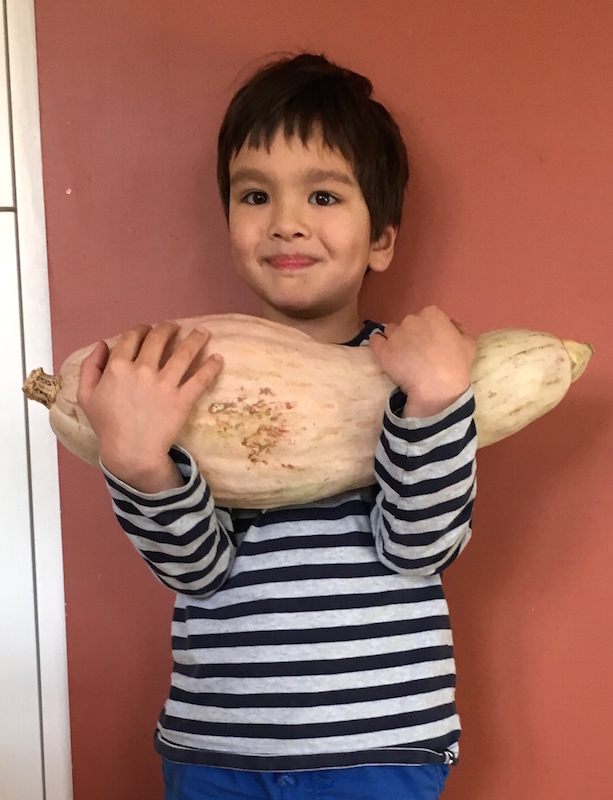
Among the fresh goods, we will have plenty of Sibley squash, beets, spuds, melons, apples, big white onions and greens. Late August, we planted a mix of bok choi, napa, daikon and turnips as a soup green mix for our own table. We had enough seed to plant about 1,000 feet, so 1,000 feet were planted as it was easier than cleaning out the seeder. We will bag up some as a field run mix. We have dubbed it the Rorschach mix, because there are so many ways you can approach the vegetables. You can pickle them, or use them in salads, stir-fry or soups. Whatever suits the moment and your character.
We have, essentially, run out of preserves, so don’t expect any until the 24th of November. We should have a full selection on the 8th of December if you are looking for Christmas gifts.

The good Borlotti crop inspired a new label (top photo); funny how that works. Carved from a cherry block, it was inspired by the lettering of Hector Guimard's signs for the Paris Metro stops. A similar lettering style graced the cover of the Modern Jazz Quartet's album Concorde (1955), over a photo of the Place de la Concorde. Preparing tomorrow’s breakfast, take a moment and listen to Sigmund Romberg’s "Softly, as in a Morning Sunrise" as performed on that album. The opening bars are a canon from Bach’s "The Musical Offering" with Percy Heath taking the theme on the double bass, and Milt Jackson (vibraphone) and John Lewis (piano) working the counterpoint.
The whole album is a masterpiece.
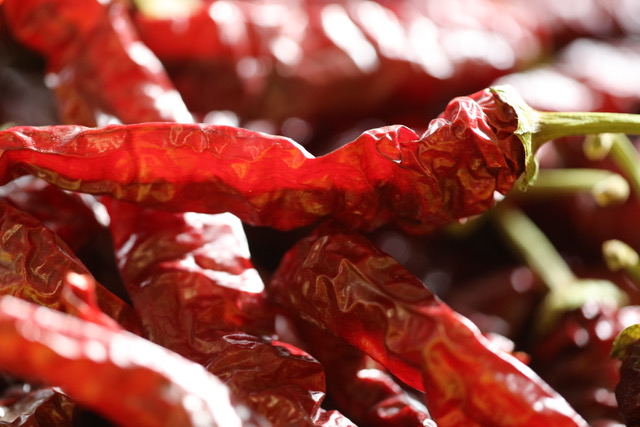
A new label for the Ayers Creek Cayenne is in the queue. It will be in the Arabesque style carved from a block of shina, Japanese basswood, the same wood as used for the barley label. The asymmetric leaves of our cayenne are very beautiful, and we have a bunch carefully pressed as models. The softer wood carves and prints differently. Shina also chips slightly as the knife moves across the grain, which provides a softer effect. A bit more difficult to carve as a result. American basswood is another wood available. As an aside, King City, Oregon is home to McClain’s Printmaking Supplies, an excellent resource for those of us who are attracted to the medium. They are exclusively mail order.
Queue up Tom & Jerry performing Beethoven’s "Turkish March" as an inspiration for the cayenne label? Nah, a mouse is already used for the flint corn label, and we have no appetite for a copyright infringement claim. To our knowledge, Tom and Jerry never performed an Arabesque anyway.
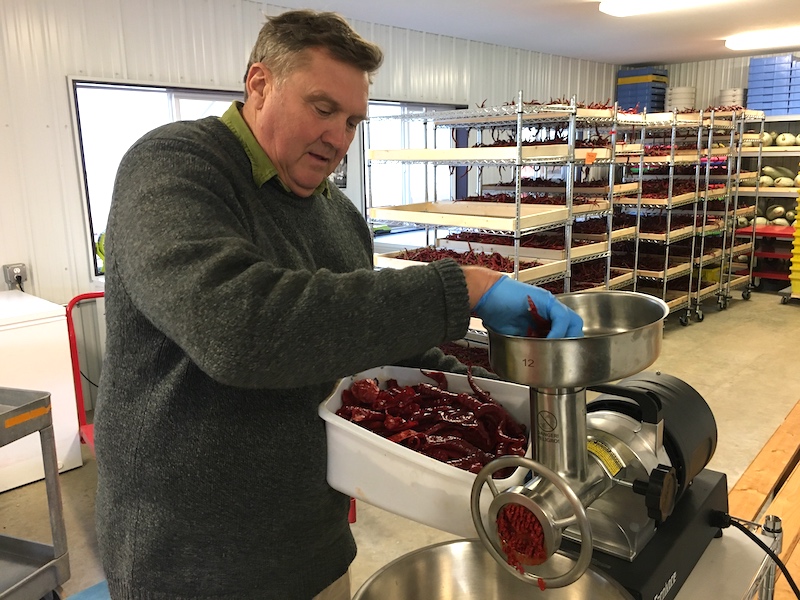
On the matter of the Ayers Creek Cayenne, we had an excellent crop this year, both in terms of quantity and quality. We have been working with this cayenne for a decade and a half, teasing out its best qualities. The effort has paid off as the fruits is now well-characterized and no longer erratic in quality. They are an amiable companion in the kitchen with a fruity complexity, very much a pepper of Oregon. The “fresh” cayennes measured 13° Brix out of the field, and after two weeks on a rack, the fruits had risen to 23° Brix as the sugars continued to develop and concentrate.
This year we sold some fresh to our restaurant accounts but we much prefer selling them dried. That said, we process fresh cayennes for our own use. We remove the seeds and placental tissue, run the fruits through a meat grinder, salt at 2.5%, and let the mash ferment. When it has aged for a few months in the garage, we will run the ferment through a food mill to remove the skins, then add some vinegar to extend and stabilize the resulting sauce. In the meantime, a jar of the fermented mash is always handy in the refrigerator.
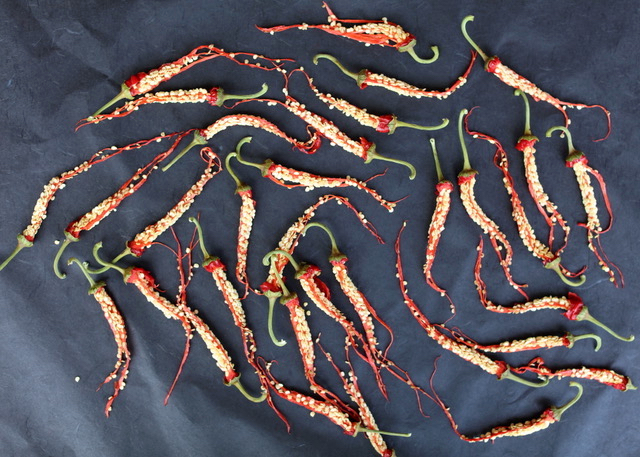
The caps with placental tissue and seeds attached are beautiful, worthy of an ancient mosaic. It is not strictly necessary to remove these parts of the fruit, but they are where most of the heat resides and are inconsequential contributors to the overall flavor. Moreover, the corky fiber of the placental tissue detracts from the texture. We find the lighter dose of heat makes the pepper easier to use and savor, fresh or dried.
We also make an oil flavored with the cayennes. The dried cayennes are stripped of the cap, seeds and placental tissue, cut up into 1-inch (25mm) pieces. For a quart of oil, we use a quarter pound or so of prepared peppers (100 grams per liter). The oil is heated to 150 to 160°F (60 to 70°C), the heat is turned off and the cayennes are added, steeping until the oil cools. We have used raw sesame oil, grape seed oil and sunflower oil. The result is a beautiful red cayenne oil. Because of the high sugar content in the fruit, do not overheat the oil as you will end up burning the sugars.
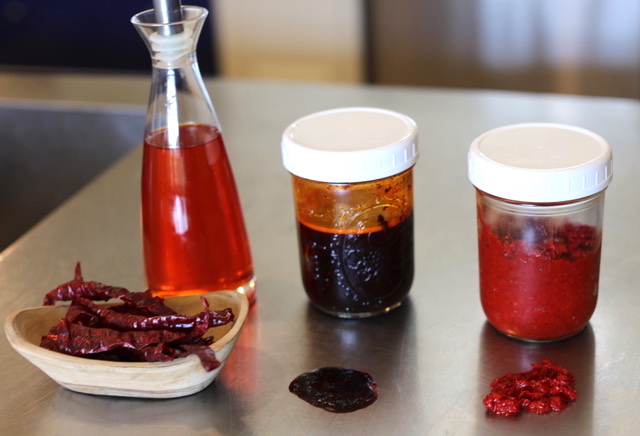
The oil extracts the fat-soluble carotenoid pigments and aromatics from the flesh. The water soluble components remain in the fruits; specifically the dark anthocyanin-based pigments and the sugars, and these move to the front of the flavor profile. After draining the oil, we run the peppers through a meat grinder to make a separate condiment. The anthocyanin pigments in the ground peppers lend a pleasant touch of bitterness that plays well against their sugars, reminiscent of bittersweet chocolate.
The photo (above) shows the deseeded dried fruits, the oil, the ground dry peppers after the oil is drained, and the fermented fresh fruit. At the open days, we will have samples for tasting.
